In the ever-evolving landscape of digital marketing, where trends shift rapidly and innovation is prized above all else, the concept of sustainability might not always take center stage. Yet, as our planet faces unprecedented environmental challenges and the imperative to combat climate change grows more urgent by the day, integrating sustainability into every facet of our lives, including digital marketing, is not just an option—it’s an imperative for a resilient future.
In recent years, there has been a notable shift in mindset among businesses of all sizes, recognizing sustainability as not only a moral obligation but also a strategic imperative. Consumers are increasingly mindful of the environmental footprint of their purchases, demanding that the brands they engage with share their values and actively work towards a more sustainable future. This shift in consumer behavior has catalyzed a transformation in the way businesses approach their operations, including marketing strategies.
Sustainable Digital Marketing Practices
Digital marketing, with its diverse array of tools and platforms, possesses immense potential to drive sustainability forward. Ahead of this year’s Earth Day, we delve into the multifaceted ways in which businesses can embrace sustainability in their digital marketing endeavors, championing a greener ethos while maintaining competitiveness in the market.
- Green Hosting and Sustainable Web Design: At the core of any digital marketing strategy lies a website. Opting for web hosting providers that utilize renewable energy sources can significantly mitigate the carbon footprint associated with hosting. Furthermore, embracing sustainable web design practices, such as optimizing images and code to reduce load times and energy consumption, can further bolster the eco-friendliness of a website, setting a positive precedent for visitors.
- Purposeful Content Creation: In an era inundated with content, businesses can differentiate themselves by crafting meaningful, purpose-driven content that educates and inspires consumers to adopt more sustainable lifestyles. Whether through thought-provoking blog posts, engaging social media campaigns, or visually captivating video content, digital marketers wield the power to raise awareness about pressing environmental issues and promote actionable solutions.
- Data-Driven Sustainability Strategies: Harnessing the power of data analytics enables businesses to pinpoint areas where sustainability can be enhanced within their operations. By analyzing data pertaining to energy consumption, waste generation, and supply chain logistics, companies can unearth opportunities to optimize processes and minimize environmental impact, driving efficiencies while reducing their carbon footprint.
- Ethical Advertising Practices: While digital advertising serves as a potent tool for reaching target audiences, it’s imperative to ensure that advertising practices are ethical and align with sustainability principles. This entails steering clear of greenwashing—making deceptive claims about the environmental benefits of products or services—and prioritizing transparency regarding the environmental impact of business operations, fostering trust and credibility among consumers.
- Community Engagement and Collaborative Initiatives: Building a sustainable future necessitates collaboration and collective action. Digital marketers can spearhead community engagement initiatives, such as crowdfunding campaigns for environmental projects or organizing virtual events focused on sustainability topics, fostering a sense of shared responsibility and galvanizing meaningful action within communities.
- Continuous Learning and Adaptation: The digital marketing landscape is in a perpetual state of flux, demanding adaptability and continuous learning from practitioners. By investing in ongoing education and staying abreast of emerging trends and best practices in sustainable marketing strategies, businesses can ensure that their digital marketing efforts remain effective, resonating with consumers while advancing sustainability goals.
In conclusion, the convergence of sustainability and digital marketing represents a pivotal opportunity for businesses to not only bolster their brand reputation and appeal to environmentally-conscious consumers but also drive tangible progress towards a more sustainable future. As we navigate the complexities of the digital age, let us remain steadfast in our commitment to the planet, leveraging the power of digital marketing to catalyze positive change and pave the way for a greener, more sustainable tomorrow. By embracing sustainability as a cornerstone of digital marketing practices, we can chart a course towards a future where environmental stewardship and business success go hand in hand, leaving a lasting legacy for generations to come.
Understanding the Importance of Data Privacy and Security
In today’s interconnected world, data has become one of the most valuable assets for businesses. However, with great power comes great responsibility. Consumers are more vigilant than ever before about how their personal information is collected, stored, and utilized by companies. Data breaches and privacy scandals have eroded trust in brands, highlighting the critical need for transparency and accountability in data handling practices.
Transparency Builds Trust
Transparency is key to building trust with consumers. Brands should clearly communicate their data collection practices, the purposes for which data is used, and the measures taken to protect it. This transparency fosters a sense of control and empowerment among consumers, reassuring them that their information is being handled responsibly.
Compliance with Regulations
Regulations such as the General Data Protection Regulation (GDPR) and the California Consumer Privacy Act (CCPA) have raised the bar for data privacy standards and accountability. Compliance with these regulations is not only a legal requirement but also a demonstration of a brand’s commitment to respecting consumers’ rights. Marketers must ensure that their data collection and processing practices align with the requirements of relevant regulations to avoid fines and reputational damage.
Prioritizing Consumer Consent
Obtaining explicit consent from consumers before collecting their personal data is crucial for maintaining trust and compliance with regulations. Marketers should provide clear and easily understandable consent forms that outline the purposes for which data will be used and offer options for consumers to opt out if they so choose. Respecting consumers’ choices and preferences demonstrates a commitment to ethical data handling practices.
Securing Data Against Cyber Threats
In addition to regulatory compliance and transparency, brands must invest in robust cybersecurity measures to protect against data breaches and cyber threats. This includes encryption, access controls, regular security audits, and employee training on data security best practices. By safeguarding data against unauthorized access and misuse, brands can instill confidence in consumers and mitigate the risks associated with data breaches.
Data Security From a Private Equity Perspective
From a private equity perspective, the significance of data privacy and security in digital marketing cannot be overstated. As investors assess potential targets or portfolio companies, they increasingly scrutinize data handling practices as a critical aspect of risk management and value creation. Brands that prioritize transparency, compliance, and trust not only mitigate regulatory and reputational risks but also enhance their attractiveness to investors. Private equity firms recognize that robust data privacy and security measures not only safeguard consumer trust but also contribute to the long-term viability and value of their investments. By aligning with regulatory requirements, obtaining explicit consumer consent, and implementing stringent cybersecurity protocols, companies can demonstrate their commitment to responsible data management practices, ultimately bolstering their appeal to investors and stakeholders alike.
Conclusion
In an era defined by data-driven marketing, prioritizing data privacy and security is no longer optional—it’s a business imperative. By prioritizing transparency, compliance with regulations, obtaining consumer consent, and implementing robust cybersecurity measures, marketers can build trust with their audience and differentiate themselves in a crowded marketplace. Embrace data privacy and security as core pillars of your digital marketing strategy and pave the way for long-term success in the digital age. Contact us to learn more.
As we step into the second quarter of 2024, businesses around the globe are gearing up to refine their marketing strategies, striving to capture attention, engage audiences, and drive growth in an ever-evolving landscape. The beginning of a new quarter presents a prime opportunity to reassess, recalibrate, and rejuvenate your digital marketing efforts. In this blog post, we’ll explore some key steps to help you plan and execute a winning marketing strategy for Q2 2024.
1. Reflect on Q1 Performance:
Before diving into Q2 planning, it’s crucial to reflect on your performance in the previous quarter. Evaluate the effectiveness of your campaigns, assess key metrics, and identify areas for improvement. Understanding what worked well and what didn’t will provide valuable insights to inform your strategy moving forward.
2. Set Clear Objectives:
Define specific, measurable goals that you aim to achieve in Q2. Whether it’s increasing website traffic, generating leads, boosting sales, or enhancing brand awareness, establishing clear objectives will guide your efforts and keep your team focused on what matters most.
3. Know Your Audience:
Take the time to revisit your target audience personas. Consumer behaviors and preferences may have shifted, especially considering ongoing societal changes and technological advancements. Conduct market research to gain a deeper understanding of your audience’s needs, pain points, and purchasing habits, allowing you to tailor your messaging and tactics accordingly.
4. Embrace Multichannel Marketing:
In today’s interconnected digital world, a multichannel approach is essential for reaching and engaging diverse audiences. Explore a mix of channels such as social media, email marketing, content marketing, SEO, PPC advertising, and influencer partnerships. Each channel offers unique opportunities to connect with potential customers at various stages of the buyer’s journey.
5. Prioritize Content Marketing:
Content remains king in the realm of digital marketing. Create high-quality, valuable content that educates, entertains, and inspires your audience. Whether it’s blog posts, videos, infographics, or podcasts, compelling content not only attracts attention but also establishes your brand as a trusted authority in your industry.
6. Leverage Data and Analytics:
Harness the power of data to inform your marketing decisions and optimize performance. Utilize analytics tools to track key metrics, monitor campaign effectiveness, and gain insights into consumer behavior. By analyzing data-driven insights, you can refine your strategies in real-time, ensuring maximum ROI and efficiency.
7. Stay Agile and Flexible:
In today’s dynamic business environment, agility is key to success. Be prepared to adapt and pivot your strategies based on evolving market trends, competitor actions, and external factors such as economic conditions or regulatory changes. Maintain open communication within your team, fostering a culture of innovation and experimentation.
8. Test and Iterate:
Don’t be afraid to experiment with new ideas and approaches. A/B testing allows you to compare different variables within your campaigns, whether it’s email subject lines, ad creatives, or landing page layouts. Use the insights gained from testing to refine your tactics and optimize performance over time.
9. Focus on Customer Experience:
Deliver exceptional customer experiences at every touchpoint, from initial interaction to post-purchase support. Personalization, responsiveness, and authenticity are key drivers of customer satisfaction and loyalty. Strive to exceed expectations and build long-lasting relationships with your audience.
10. Monitor and Measure Results:
Regularly monitor the performance of your marketing initiatives against your predefined objectives. Track key performance indicators (KPIs) and metrics to gauge progress and identify areas that require adjustment. By continuously measuring results, you can refine your strategies and allocate resources more effectively.
As you embark on your journey through Q2 2024, remember that success in marketing is not just about following a predetermined plan but rather about adapting to change, embracing innovation, and continuously striving for improvement. By taking a strategic approach and implementing these key tactics, you can position your business for growth and success in the months ahead. Need help planning for Q2 and beyond? Contact us.
In the ever-evolving realm of digital marketing, one strategy has stood the test of time and continues to prove its effectiveness: User-Generated Content (UGC). From reviews and testimonials to social media posts and videos, UGC has become a cornerstone for brands looking to connect with their audience in authentic and meaningful ways. In this blog post, we’ll explore the significance of UGC and how you can leverage it to enhance your marketing efforts.
Understanding User-Generated Content
User-Generated Content refers to any form of content created by consumers rather than the brand itself. This content can take various forms, including but not limited to:
- Reviews and Testimonials: Genuine feedback from satisfied customers can significantly influence purchasing decisions.
- Social Media Posts: When users share photos, videos, or stories featuring your products or services, it provides social proof and increases brand visibility.
- Blog Comments and Discussions: Engaging with your audience on your blog or community forums fosters a sense of community and loyalty.
- Video Content: Whether it’s unboxing videos, product tutorials, or user-generated commercials, videos created by consumers can be powerful marketing assets.
The Power of Authenticity
One of the primary reasons why UGC is so effective is its authenticity. Unlike traditional branded content, which may come across as promotional or biased, UGC feels genuine and trustworthy. When potential customers see real people using and enjoying your products or services, they’re more likely to relate to the experience and feel confident in making a purchase.
Building Trust and Credibility
In an age where consumers are inundated with marketing messages, trust and credibility are more important than ever. By showcasing UGC, you’re demonstrating that your brand has a loyal customer base who are willing to vouch for your products or services. This social proof can help alleviate doubts and reservations that potential customers may have, ultimately leading to increased sales and conversions.
Encouraging User Participation
To effectively harness the power of UGC, it’s essential to actively encourage and facilitate user participation. Here are a few strategies to consider:
- Create Shareable Experiences: Design products, services, or campaigns that are inherently shareable and encourage users to create content around them.
- Run Contests and Challenges: Host contests or challenges where users can submit their content for a chance to win prizes or recognition.
- Engage with Your Audience: Respond to comments, share user-generated content on your social media channels, and show appreciation for your customers’ contributions.
- Provide Incentives: Offer incentives such as discounts, exclusive access, or featured spotlights to incentivize users to create and share content.
Leveraging UGC Across Channels
Once you’ve collected UGC, it’s essential to leverage it across various marketing channels to maximize its impact. Whether it’s featuring customer reviews on your website, showcasing user-generated photos on social media, or incorporating testimonials into your email campaigns, UGC can enhance virtually every aspect of your marketing strategy.
Conclusion
User-Generated Content is a powerful tool that can help you build trust, credibility, and authenticity with your audience. By actively encouraging user participation and leveraging UGC across channels, you can create a more engaging and compelling brand experience that resonates with your customers on a deeper level. Embrace the power of UGC and watch as your digital marketing efforts thrive. Contact us to learn more.
With new channels and platforms constantly emerging in today’s evolving digital landscape, it’s easy to get lost in the buzz of the latest ‘shiny new toy.’ Today, it’s more important than ever that when executing digital orchestration initiatives, that we never lose sight of the main goal, and the main KPIs we are looking to achieve. Yes – it can be helpful to tap into new channels and a/b test different tactics, but only to the extent that it will help achieve your campaign’s goals.
What Is Digital Orchestration?
As a refresher, digital orchestration refers to the strategic coordination of digital marketing channels, tools, and platforms to deliver a consistent and impactful message to your target audience. Digital orchestration is the practice of aligning technology to marketing efforts, creating a seamless customer experience across multiple touchpoints. In simpler terms: our goal as digital orchestration conductors is to ensure that all of our marketing efforts – from paid media to SEO to PR to user experience on the site – are aligned to help deliver the end goal, whatever that may be, to our clients.
When kicking off a digital orchestration project, the first question we ask our clients is: what is your goal? What are looking to achieve in the digital space? The two primary answers we hear are:
- Brand Awareness – to gain more brand recognition in the space, increase our Share of Voice and our market share footprint across organic and paid efforts.
- Lead Generation – to drive more users down the funnel to convert through a high-value form submission, driving more quality leads, at a lower cost per lead.
These two goals often complement each other, and if our client has not spent time investing in brand awareness before we launch our digital orchestration program, we will recommend a phased approach – phase 1: brand awareness, phase 2: lead generation. While lead generation is typically the bottom-line goal, it is critical to gain brand recognition before working towards leads. We cannot achieve lead goals if no one knows who our client is.
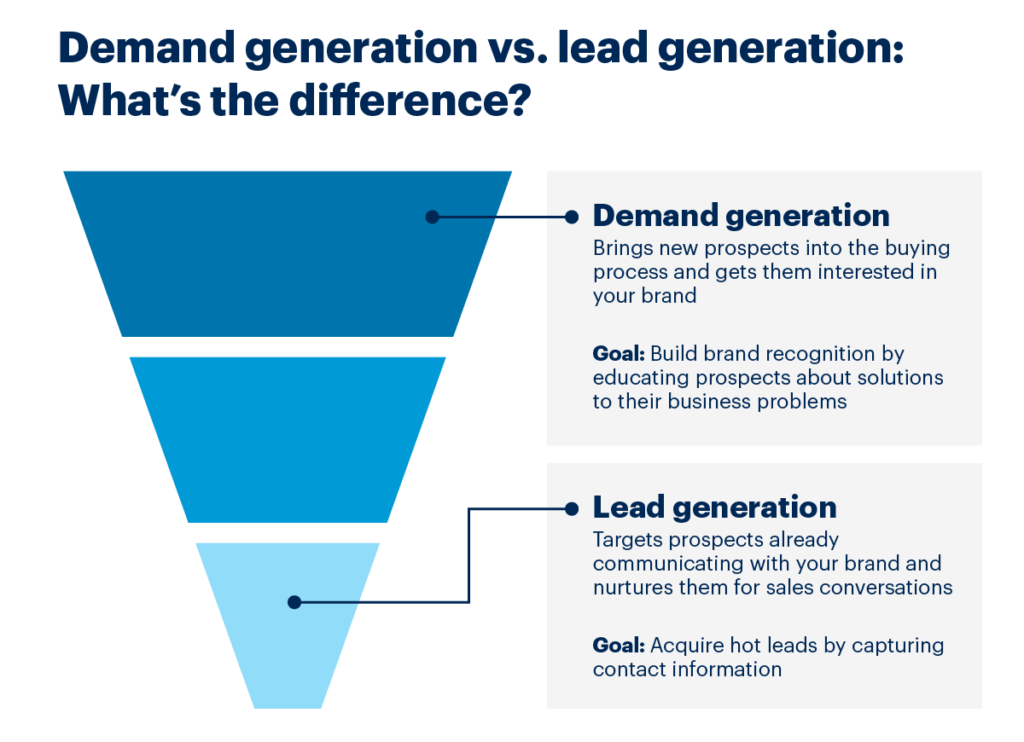
If the goal is brand awareness, our team looks at a variety of key KPIs per channel:
-
Organic Search
- Page Rank for branded terms, and the increase in rank we see over time
- Bounce Rate on the site – once users land on the site from organic search, are they immediately bouncing?
- Pages/Session and Return Rate – similarly, if they land on the site through our branded terms, how many pages are they engaging with, and do they return to the site? If so, how often?
-
Organic Social:
- Impressions on new branded posts. Is the number of users seeing our posts increasing as we post more frequently?
- Follower count – are we seeing an increase in followers as we enhance our organic social footprint?
- Engagements – Are users interacting with our posts? We also want to ensure all – if not most – engagements (comments, reactions, etc.) are positive.
- Click-Through & Site Engagement – are users visiting our site through our organic social posts? Similar to organic search, are they returning to the site, and visiting multiple pages?
-
PR:
- Share of Voice – are we seeing an increase in share of voice in the marketplace from an increase in branded press releases and announcements?
-
Paid Media:
- Impressions & Clicks – volume is critical for generating mass awareness, and paid media is the only channel where we can pay for that volume. The first touchpoint of the funnel is getting eyes on the ads, and then getting users to click through to the site.
- CTR – in addition to volume, it’s critical that we target the RIGHT audience. We don’t want to cast too wide of a net and drive irrelevant volume to the site. In addition to strong volume metrics, we want to see a high CTR for each channel
- Site Traffic – Like other channels, our goal with paid media is to drive an increase in traffic to the site. We want to see an increase in sessions, pages/sessions, and new users on the site.
- Site Engagement – is the traffic that we are driving through paid spending time on the site, or are they bouncing immediately?
- CPCs & CPMs – how much does it cost, on average, to drive users to our site? How much does it cost to reach our target audience?
If the goal is lead generation, our KPIs per channel shift to focus on actions that end users are taking on the site:
-
Organic (Social, Search, PR):
- Form Submissions: are users navigating to demo request or contact us form to gain more information?
- Session to form submission rate: how often are users visiting the site proceeding to fill out a form? Typically, how often does a user visit the site before submitting a form?
-
Paid Media: along with the KPIs in the Organic section, we also measure:
- Cost/Conversion: On average, how much does it cost for us to drive a form submission? We will measure this against industry and paid channel benchmarks
- Conversion Rate: How often are users converting once they click through to the site? How does this vary between brand and nonbranded campaigns/keywords?
Once we have established our goals, and therefore the key KPIs we want to monitor for our digital orchestration efforts, we can start to seamlessly track, monitor, update and optimize our paid campaigns and organic initiatives.
Our team leverages tools like Google Looker Studio to create real-time reports that consolidate data across all channels and touchpoints, allowing us to see 1) how our KPIs are trending per channel and 2) how our overall digital orchestration strategy is performing based on our primary goal.
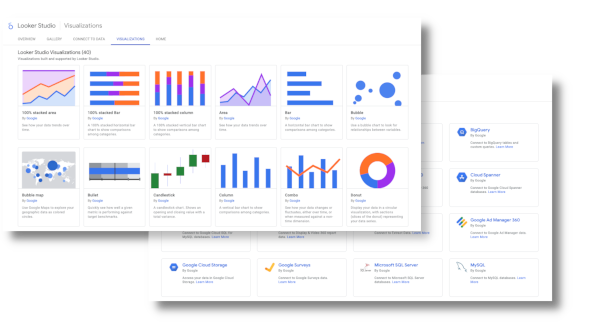
Most importantly, our comprehensive reporting allows us to easily review our data, and apply updates to our strategy based on what we’re seeing. For example, if users are bouncing once they visit our campaign landing page, we should test different landing page variants. Does the copy align to our ad? Is the user experience intuitive? Should we add a lead form above the fold? There are countless tests we can implement, and the beauty is we can continue testing until we see the results we are looking to achieve!
In conclusion, when deploying a digital orchestration program, make sure you are aligned on the primary goal. Identify the KPIs that you want to measure and monitor, and consistently review those KPIs to ensure your digital orchestration strategy is performing to the best of its ability. Don’t be afraid to a/b test landing pages, messaging, CTAs, imagery, etc. As long as you never lose sight of your primary goal, you’ll be on track to achieve the KPIs you want to see.
Ready to take your marketing to the next level? Contact Bluetext to learn about our digital orchestration services and how this could be tailored to your business’ objectives.
In today’s digital age, marketing efforts have evolved and expanded to include various online channels and platforms. With the increased accessibility of technology and online tools, businesses now have an unprecedented opportunity to reach their target audience in more efficient and targeted ways. Sounds like music to any marketer’s ears, right? The challenge though lies in how to coordinate various channels and strategies into one cohesive song. This is where digital orchestration comes into play, a new methodology for managing multiple workstreams so that they complement, never compete.
Digital orchestration refers to the strategic coordination of various digital marketing channels, tools, and platforms to deliver a consistent and impactful message to the target audience. It involves leveraging technology to align marketing efforts and create a seamless customer experience across different touchpoints.
As practiced orchestration conductors, Bluetext explores the concept of digital orchestration in marketing to discuss its benefits, challenges, and best practices.

Benefits of Digital Orchestration
- Consistency: Digital orchestration helps maintain a consistent brand identity and message across different channels. Consolidating efforts to a single team or agency partner can bring endless long-term benefits to your brand identity. Centralization of creative, campaign management and content creation ensures that customers receive a cohesive experience, whether they are interacting with a brand through social media, email campaigns, or website.
- Efficiency: By efficiently managing marketing activities across various channels, businesses can optimize their resources and reduce wasteful spending. Rather than reporting on multiple campaign performances at different intervals, digital orchestration times all reporting to the same frequency within a single dashboard, so that businesses have full visibility into what is and isn’t working. Digital orchestration allows for a seamless flow of data, to ensure all efforts are targeted and effective.
- Personalization: With the help of data analytics and customer profiling, digital orchestration enables marketers to deliver personalized content and offers to their target audience. With a clearer understanding customers’ preferences and behaviors, businesses can tailor their marketing messages to resonate with individual consumers, leading to higher engagement and conversion rates.
- Measurability: Digital marketing offers robust analytics and tracking capabilities. Digital orchestration allows marketers to monitor and measure the effectiveness of each channel and campaign. The gaps in one channel can be filled by another, and pace media spend accordingly. in a method led by numbers, followed by experience, orchestration is a data-driven approach that enables informed decisions, optimized marketing strategies, and improved overall performance.
Challenges in Digital Orchestration
This all sounds promising, so why aren’t all organizations embracing this strategy? While digital orchestration brings significant benefits, it poses some challenges in management and resources, which can be overcome by an agency partner:
- Complexity: With the abundance of marketing channels and platforms available, managing and coordinating them effectively can be a daunting task. Marketers must invest time and effort in understanding various digital tools, staying updated with emerging trends, and developing a holistic strategy.
- Data Integration: One of the fundamental aspects of digital orchestration is integrating data from different sources to gain a comprehensive view of customers’ interactions. However, merging data from various channels and systems can be challenging due to compatibility issues and technical complexities. Hiring an agency with data integration and CRM experience is critical to success.
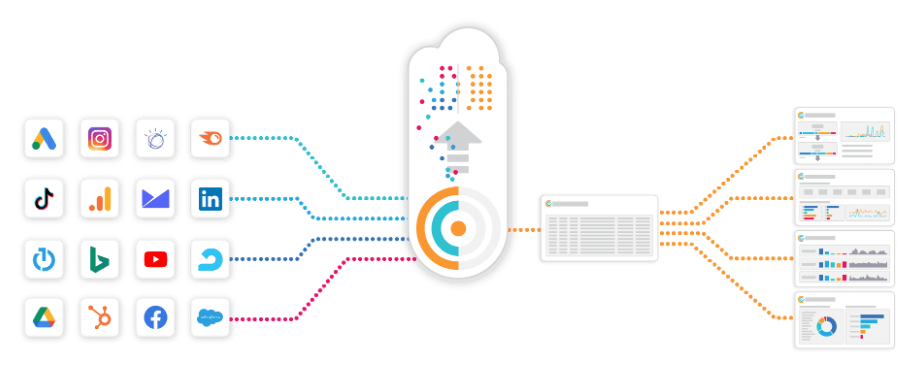
Best Practices for Digital Orchestration
To succeed in digital orchestration, digital marketers adopt the following methods and best practices:
- Define a Clear Strategy: Start by setting clear goals and objectives. Define your target audience, key messaging, and desired outcomes. Develop a comprehensive strategy that aligns all marketing activities towards achieving these objectives.
- Choose the Right Channels: Identify the most relevant channels for your business and target audience. Don’t try to be everywhere; instead, focus on the platforms that will yield the highest ROI. Understand your customers’ preferences and behavior to ensure your message reaches them effectively.
- Integrate Data and Tools: Establish a centralized system where you can collate and analyze data from different channels. This will help you develop a unified view of your customers and make data-driven decisions. Invest in marketing automation tools that integrate with your data sources and enable seamless communication across channels.
- Monitor and Optimize: Regularly monitor the performance of your marketing campaigns and channels. Leverage analytics and tracking tools to measure key metrics and identify areas for improvement. Use A/B testing to optimize your messaging, design, and targeting strategies.
From a private equity perspective, the evolution of marketing in the digital age presents a compelling investment opportunity. As businesses increasingly rely on online channels to reach their target audiences, the need for strategic coordination and efficiency becomes paramount. Digital orchestration emerges as a solution, offering a structured approach to managing diverse marketing efforts. By centralizing resources and leveraging technology, businesses can enhance brand consistency, optimize resource allocation, and personalize customer interactions. However, challenges such as complexity and data integration require careful navigation, making partnership with agencies proficient in these areas essential. Embracing best practices, including clear goal-setting, channel selection, and data integration, is key to realizing the full potential of digital orchestration. Ultimately, by investing in this methodology, private equity firms can position their portfolio companies for sustained growth and competitive advantage in the dynamic digital landscape.
In conclusion, digital orchestration in marketing is a powerful approach to leverage technology and align marketing efforts across various channels. By implementing a robust strategy and following best practices, businesses can create a seamless customer experience, boost engagement and conversion rates, and achieve their marketing goals in the digital landscape.
Ready to take your marketing to the next level? Contact Bluetext to learn about our digital orchestration services and how this could be tailored to your business’ objectives.
We’ve all been there – eagerly searching the internet for that piece of information we just can’t do without, only to encounter that dreaded message: “404 – Page Not Found.” It’s like hitting a brick wall in the digital world, right? But here’s the good news: a 404 error page is more than just a dead-end; it’s an opportunity for your brand to showcase its playful, fun, and creative side.
What’s a 404 Page, Anyway?
Before we dive into the whimsical world of fun 404 error pages, let’s get the basics straight. A 404 error page is a response code served by a web server when a user requests a web page that can’t be found. This can happen for various reasons, such as a broken link, a mistyped URL, or a deleted page. In essence, a 404 error page is like the “Sorry, wrong number” of the web world.
Key Elements of a 404 Page
A great 404 error page should do more than just apologize for the inconvenience. It should reflect your brand’s personality, engage the user, and steer them back on track. Here are some key elements to include:
- A Friendly Apology: Start with a warm, friendly apology for the inconvenience.
- Clear Navigation: Provide easy-to-find navigation options to help users find what they were looking for.
- Search Bar: Include a search bar to help users look for specific content.
- Contact Information: Add contact details or links to customer support for assistance.
- Branding: Ensure that the page design is consistent with your brand’s visual identity.
- Humor and Creativity: Inject some fun, humor, or creativity into the design or content to make users smile.
10 Examples of Fun and Creative 404 Pages
Now, let’s take a look at 10 examples of 404 error pages that have nailed the art of infusing brand personality into a potentially frustrating situation:
- Lego: True to their playful spirit, Lego offers a whimsical 404 page that features a construction worker diligently fixing the missing page.
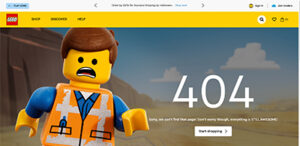
- Mailchimp: The folks at Mailchimp turn their mascot into a detective, ready to solve the mystery of the missing page.
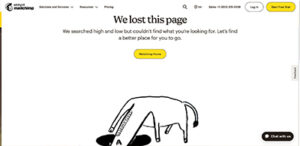
- IMDb: IMDb’s 404 page features a different quote every time you refresh the page, altering classic movie quotes to apply to your missing page.
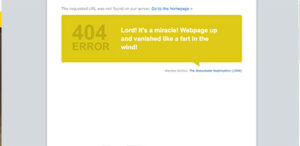
- Hootsuite: Hootsuite’s owl mascot consoles users while suggesting alternative ways to find what they need.

- HubSpot: They offer a cute 404 page with a graphic of a broken heart, a love-themed message, and lots of information on how to continue your journey.
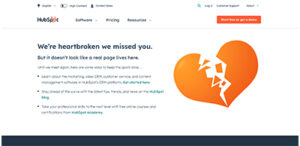
- NPR: National Public Radio offers links to find what you’re looking for, with a clever segue to some of their articles with the message, “stick around to browse through NPR stories about lost people, places and things that still haven’t turned up.”
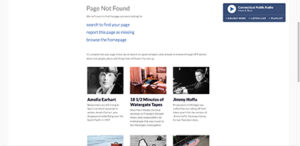
- Pinterest: Pinterest’s 404 page automatically redirects users to their “Ideas” landing page, allowing users to explore all that Pinterest has to offer.
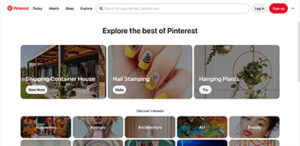
- NFL: The NFL throws a flag on the play to represent your lost page.

- Pixar: Pixar incorporates their well-known movie characters and movie references into their 404 page.
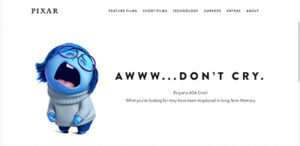
- Figma: Staying true to their design roots, Figma displays an interactive 404 graphic that allows the user to design their own 404 page.
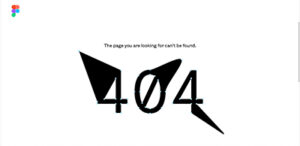
Your 404 error page is more than just a dead-end; it’s a golden opportunity to leave a lasting, positive impression on your website visitors. So, why not have a little fun with it? Inject some personality, humor, or creativity, and turn that frustrating moment into a delightful one. After all, a little laughter can go a long way in making a user’s day better.
Welcome to another exciting episode of Digital Doorways, the podcast that unlocks the secrets to success in the ever-evolving digital landscape. I’m thrilled to introduce our guest today, Matt Wilson, the CEO of 500°, an ad agency that’s been revolutionizing the way food brands like Burger King, Popeyes, and Tim Hortons merchandise in an era of constant digital transformation. Matt’s agency has not only elevated in-store experiences but played a pivotal role in the legendary launch of the chicken sandwich that made waves across America.
Digital Doorways is all about change and how CEOs leverage branding, positioning, and marketing to navigate change effectively. In today’s episode, we’ll delve into Matt’s insights on the dynamic world of quick-serve restaurant marketing, where adaptability and innovation are paramount. We’ll also explore how Matt, as the CEO of Eastport Holdings, manages a diverse collection of marketing firms across various industries, all while steering through the ever-changing tides of business.
What makes this episode even more special is the personal connection Matt and I share. Our bond is not just professional; it’s rooted in family and friendship. Matt’s cousin and my mentor, Jan Wessling, played an influential role in both our careers. Jan not only gave Matt his first corporate job at Marriott but also entrusted me with one of my initial website projects. We both consider Jan not only a mentor but family and a dear friend. Furthermore, it’s worth noting that Eastport Holdings purchased my agency, Bluetext, in 2017, solidifying the intertwining paths of our professional journeys.
So, fasten your seatbelts for an enlightening conversation that will leave you hungry for knowledge and innovation, as we explore how CEOs like Matt Wilson leverage branding, positioning, and marketing to navigate change successfully in today’s rapidly evolving digital landscape. Welcome, Matt Wilson!
In today’s highly digital world, it’s no secret that each and every one of us is faced with an overload of content and information every day — but when it comes to marketing, does quantity really outweigh quality? The short answer is no. It can be easy to get caught up in the race to generate more: more content, more leads, more interactions. However, amidst this frenzy, a timeless principle continues to hold true — the undeniable value of quality over quantity. Shifting your focus towards producing quality content can lead to far more meaningful results. Not only will it drive engagement, but it will propel your brand towards sustained success.
Engagement that Resonates
With the integration of AI tools into marketing workflows, it is now easier than ever to roll out content at an accelerated rate. Companies are able to streamline the process of content creation and publish autonomously, but is the content that they’re creating truly resonating with audiences? Consistently producing content for content’s sake will not leave a lasting impression on an audience. Imagine sifting through a barrage of generic content that offers little more than a fleeting glance. Now contrast that with stumbling upon a meticulously crafted piece that speaks directly to your needs and interests — the latter, undoubtedly, captures viewers’ attentions and engages them on a deeper level. Quality content has the power to resonate with target audiences, evoking emotions, sparking conversations, and leaving lasting impressions. Forming genuine connections with your audience requires understanding their needs, engaging in meaningful conversations, and addressing their pain points — all of which needs to be done in a thoughtfully planned manner. By investing time in personalized interactions and addressing individual concerns, companies can foster a loyal community that actively supports and advocates for their brand.
Conversion that Counts
While a high quantity of leads might seem enticing, it’s the quality of those leads that matters. High-quality content has been found to generate 9.5 times more leads than low-quality content, and while having a steady presence on socials is important, it’s ultimately the number of conversions that result from your social presence that matters. Quality leads are more likely to become satisfied customers who stick around for the long haul; high-value content doesn’t just spark genuine and authentic interest amongst targeted audiences, but it can also establish lasting brand trust and loyalty. Long-term customers will inevitably drive consistent revenue and refer others to fall in line.
Brand Perception that Prevails
Your brand’s image is not just built by how frequently you appear, but by the impression you leave. A few high-quality interactions can create a stronger brand perception than a multitude of disengaged views. Consistently delivering value through quality content and interactions paints your brand in a positive light and encourages positive word-of-mouth referrals.
In the noisy landscape of modern marketing, the allure of quantity can be overwhelming, especially when AI tools can expedite content production and posting. However, by shifting your focus to quality, you’re not just participating in the marketing game — you’re setting yourself apart as a valuable player. Every piece of content, every interaction, and every engagement becomes a chance to make a meaningful impact. You are investing in the foundation of enduring success, building relationships that last and fostering a brand that stands the test of time.
If you are interested in learning more about how Bluetext’s marketing services can help you create quality content, contact us. As a dc-based digital design agency, we know how to make content that counts.
In today’s fast-paced digital landscape, your website serves as the virtual face of your business. It’s often the first point of contact for potential clients, partners, and investors. Therefore, ensuring that your website is not only visually appealing but also functional and up-to-date is crucial for maintaining a strong online presence. If you’re a business owner, here are five unmistakable signs that indicate it’s time to consider a website redesign with a digital design agency like Bluetext:
1. Your Design Feels Stale and Outdated
Have you ever visited a website and felt like you’ve been transported back in time? If your website design looks like it’s stuck in a previous decade, it’s clear that a website refresh is overdue. An outdated design not only fails to engage modern audiences but can also tarnish your brand’s reputation. Your website should reflect your company’s commitment to innovation and resonate with your target audience’s design preferences.
2. Your Website Isn’t Mobile-Friendly
In today’s mobile-driven world, a significant portion of decision-makers engage with websites from smartphones and tablets. If your website isn’t optimized for mobile devices, you risk alienating a substantial portion of your potential clientele. A mobile-unfriendly website can result in a poor user experience, leading to missed opportunities and a negative perception of your brand.
3. High Bounce Rates and Low Conversions
A high bounce rate, coupled with low conversion rates, could be a strong indicator that your website isn’t effectively engaging visitors or motivating them to take action. If visitors are leaving your site without exploring further or without completing desired actions, it’s time to examine the user experience your website offers.
4. Your Website Is Slow
A slow website is not only frustrating to users, but site speed is also a very important metric that Google takes into account when looking at search engine optimization. Google’s PageSpeed Insights tool often reveals issues with your website’s code and shows outdated development practices that could be an indicator that it is time for a website redesign. A slow website can hinder your ability to reach potential customers through organic search.
5. Changing Business Goals and Audience Needs
As your business evolves, your website should evolve with it. If your business goals, target audience, or product/service offerings have changed, your website might not accurately reflect these shifts. A misalignment between your website and your business’s current direction can lead to confusion among visitors and missed opportunities to win potential business.
Your website is more than just an online brochure – it’s a dynamic tool that can drive growth, capture leads, and leave a lasting impression on your audience. If you’ve noticed any of these signs, it’s time to consider a website redesign. Bluetext is here to help you transform your digital presence into a powerful asset that propels your business forward. Get in touch with us today, and let’s embark on the journey of reimagining your website’s potential.